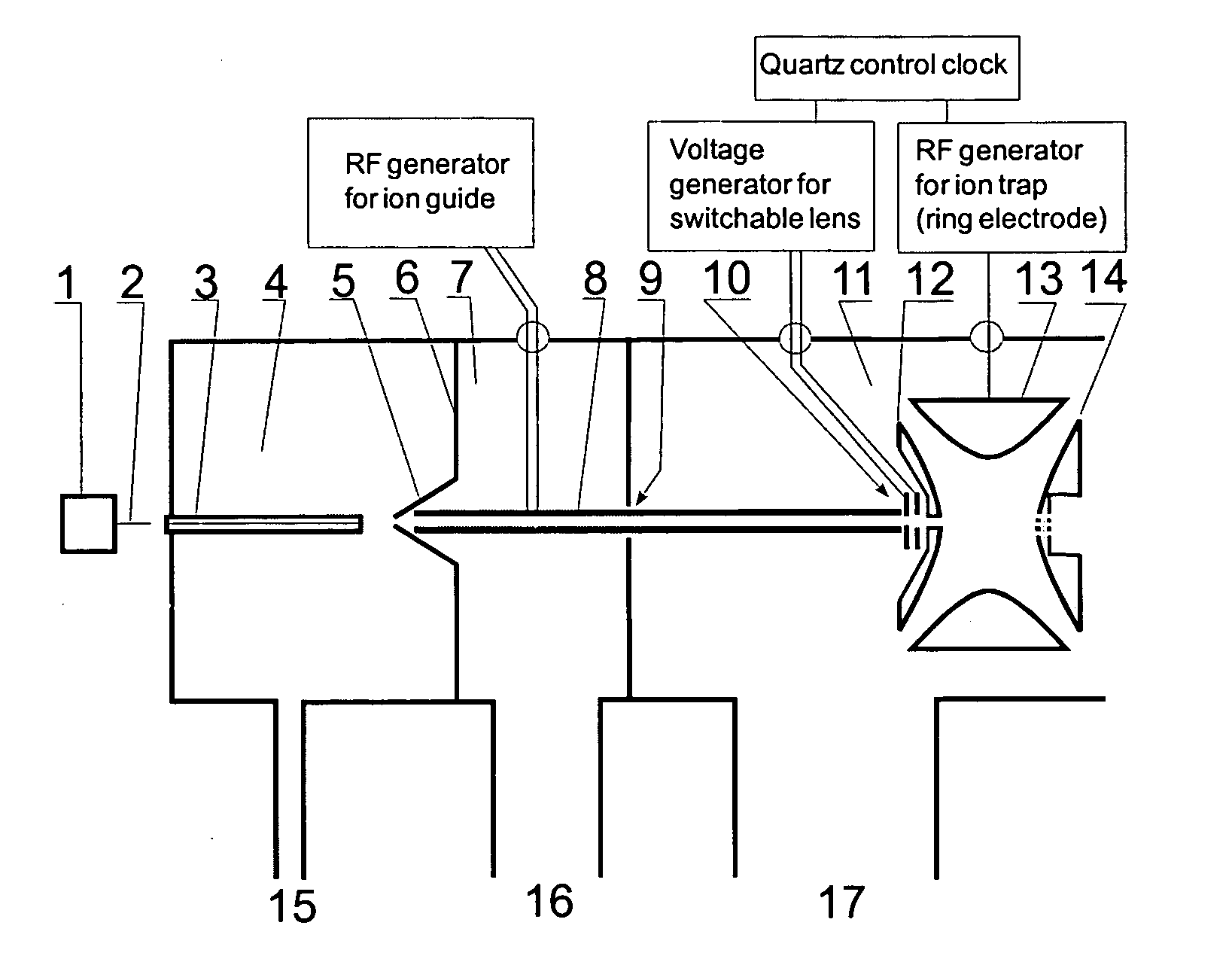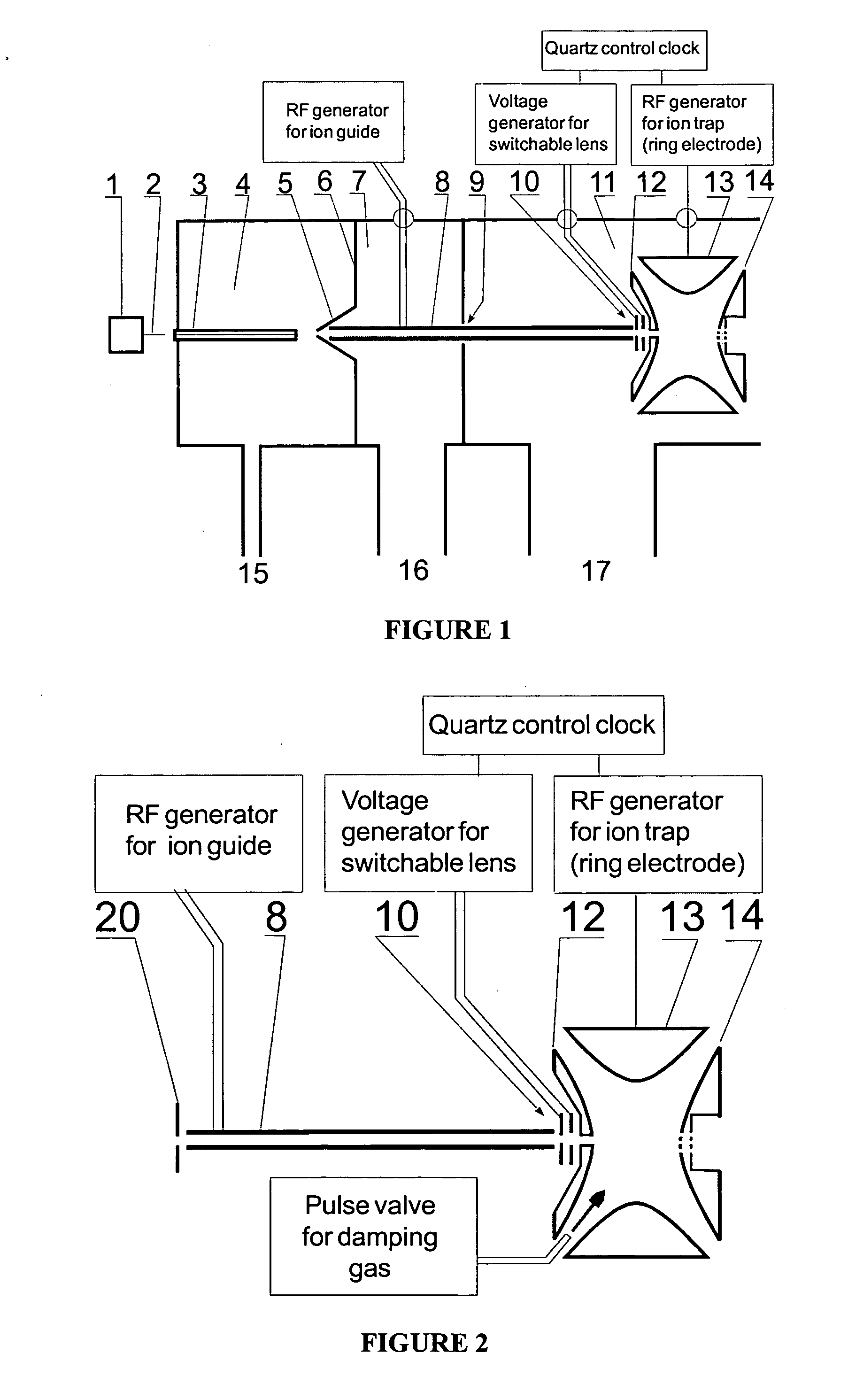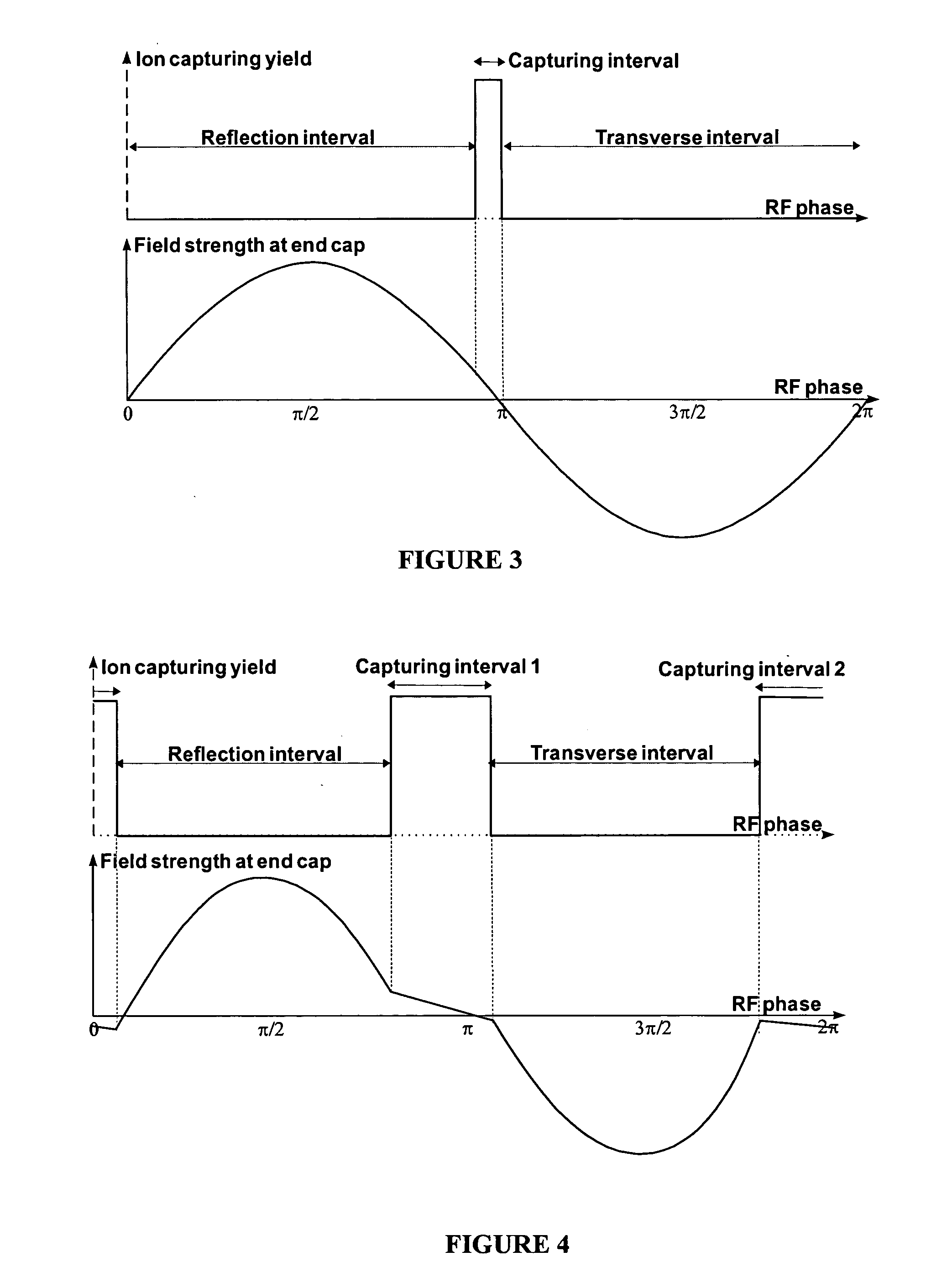Method and device for the capture of ions in quadrupole ion traps
a quadrupole ion and trap technology, applied in the field of quadrupole ion trap capture methods and devices, can solve the problems of unsatisfactory yield, unable to capture the remaining ions, and the percent of ions being continuously produced, so as to reduce the injection energy of ions and increase the chances of capture, the effect of reducing the mass discrimination of the injection lens
- Summary
- Abstract
- Description
- Claims
- Application Information
AI Technical Summary
Benefits of technology
Problems solved by technology
Method used
Image
Examples
Embodiment Construction
[0025]FIG. 1 shows the quadrupole ion trap mass spectrometer with vacuum-external electrospray ion source, switchable ion lens, and RF quadrupole ion trap. The invention should not be limited to electrospray ion sources; ion generation by matrix-assisted laser desorption (MALDI), for example, can also be used. The supply tank (1) contains a liquid which is sprayed by an electric voltage between the fine spray capillary (2) and the front of the inlet capillary (3). The ions, together with ambient air, enter through the inlet capillary (3) into the first chamber (4) of a differential pumping system, chamber (4) being connected to a roughing pump. The ions are accelerated towards the skimmer (5) and pass through the opening in the skimmer (5), located in partition (6), into the second chamber (7) of the differential pumping system. This chamber (7) is connected via connector (16) to a high vacuum pump. The ions are accepted by the RF ion guide (8) and guided through the wall opening (9...
PUM
| Property | Measurement | Unit |
|---|---|---|
| frequencies | aaaaa | aaaaa |
| energy | aaaaa | aaaaa |
| frequency | aaaaa | aaaaa |
Abstract
Description
Claims
Application Information
 Login to View More
Login to View More - R&D
- Intellectual Property
- Life Sciences
- Materials
- Tech Scout
- Unparalleled Data Quality
- Higher Quality Content
- 60% Fewer Hallucinations
Browse by: Latest US Patents, China's latest patents, Technical Efficacy Thesaurus, Application Domain, Technology Topic, Popular Technical Reports.
© 2025 PatSnap. All rights reserved.Legal|Privacy policy|Modern Slavery Act Transparency Statement|Sitemap|About US| Contact US: help@patsnap.com



